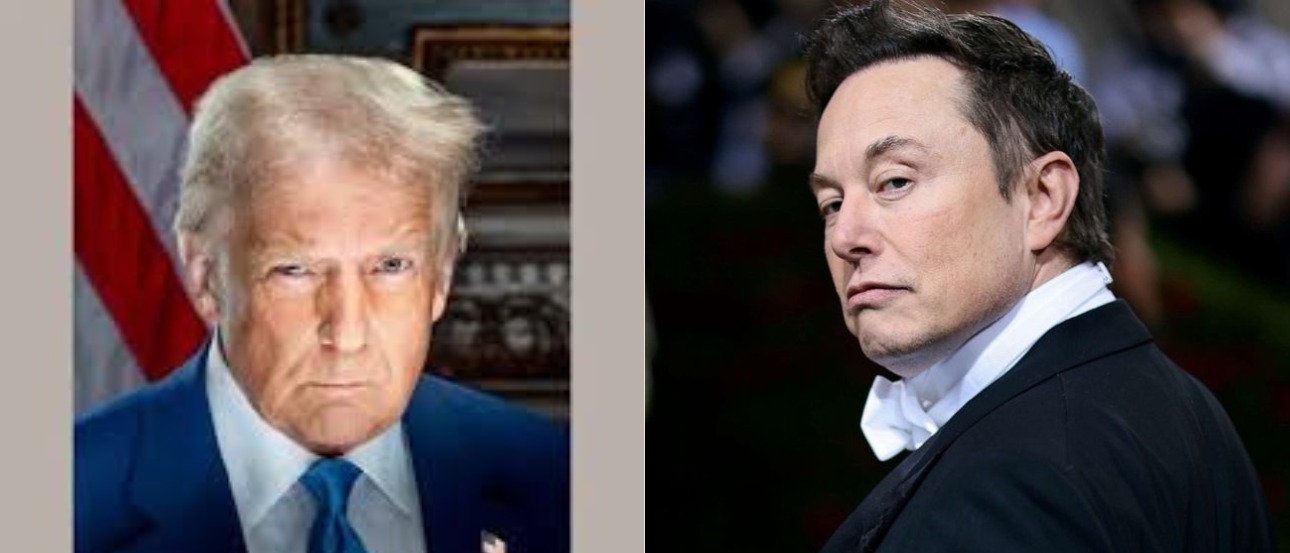Donald Trump is set to be sworn in as the 47th president of the United States today and is likely to sign multiple executive orders as early as his first day in office, aimed at undoing many of the Biden administration’s policies. Trump is returning to the White House with Elon Musk at his side.
Elon Musk’s support for Donald Trump’s presidential campaign and his subsequent appointment as a key team member have sparked significant debate. The pair plan to write the next chapter in US spaceflight history with an ambitious agenda that includes the first human footprints on Mars.
Musk, known for his vision and accomplishments in space exploration, brings both optimism and concern to the table. While his innovative spirit has redefined space travel, questions arise about whether his influence could lead to unsustainable practices and a shift in NASA’s priorities.
During Trump’s previous presidency, his administration revitalized the Artemis program, a plan originally introduced by George W. Bush to return humans to the Moon. This initiative had been shelved during the Obama era but regained momentum under Trump’s leadership, culminating in the Artemis Accords.
These agreements aim to foster international collaboration in lunar exploration. However, Trump’s speeches during his recent campaign suggest a pivot towards Mars. For instance, he explicitly called for accelerated missions to Mars, saying, “We will land an American astronaut on Mars… Get ready, Elon.”
This shift raises critical questions, will Trump’s renewed focus on Mars derail the Artemis program. Could NASA’s resources and attention be redirected towards Musk’s SpaceX, which has already made significant strides with its Starship rocket?
Starship has surpassed many milestones more rapidly than NASA’s Space Launch System (SLS), which has faced delays and budget overruns. Yet, Starship is not fully prepared for human lunar or Martian missions. If Trump’s administration leans heavily on SpaceX, it could accelerate timelines but, also risk sidelining other critical NASA projects.
Musk’s vision also includes the creation of a Department of Governmental Efficiency (DOGE), aimed at reducing regulatory barriers to innovation. While this idea aligns with Musk’s “get-things-done” ethos, it raises concerns about the long-term impact of unchecked innovation.

Historical examples, such as the Industrial Revolution, demonstrate the environmental and social costs of unsustainable practices. Space activities are no exception. The proliferation of satellites, particularly from Musk’s Starlink, has already raised alarms about congestion in low Earth orbit. Without stringent regulations, the risk of creating an orbital debris crisis becomes significant.
Trump’s track record on climate policy adds another layer of complexity. His previous administration cut funding for climate-related initiatives, potentially undermining space projects focused on monitoring Earth’s atmosphere and climate change. If similar policies continue, it could divert resources away from critical scientific research in favor of commercial endeavors like those spearheaded by SpaceX.
Moreover, Musk’s influence extends to NASA’s leadership. The appointment of Jared Isaacman, a SpaceX collaborator, as NASA’s administrator highlights the growing synergy between the public and private sectors in space exploration.
While Isaacman’s enthusiasm for ambitious goals is evident, his alignment with Musk’s vision could prioritize commercial interests over NASA’s broader objectives. For instance, could we see NASA funds disproportionately directed toward SpaceX projects? This potential conflict of interest underscores the need for balanced decision-making.
On the positive side, Musk’s approach to streamlining processes and cutting through bureaucracy could address inefficiencies that have long plagued NASA. The delays and cost overruns of the SLS program are a case in point. Starship’s rapid development demonstrates the advantages of Musk’s “fail fast, learn fast” methodology. However, such an approach must be tempered with rigorous oversight to ensure safety and sustainability.
International dynamics add another layer to this discussion. The Artemis Accords have positioned the US as a leader in collaborative space exploration, inviting countries to join its vision of transparency and resource sharing. Yet, some argue that the Accords also serve as a geopolitical tool to counter China’s growing influence in space.
By fostering a bloc of like-minded nations, the US effectively sidelines China, which has made remarkable advancements with its Tiangong space station and lunar missions. This rivalry, reminiscent of the Space Race of the 1960s, has fuelled innovation but also heightened tensions which we have discussed previously here!
China’s exclusion from the Artemis framework underscores the competitive undertones of modern space exploration. While the US promotes collaboration, its actions—such as the deliberate omission of China from key initiatives—signal a strategic effort to maintain dominance. This approach has had mixed results. On one hand, it has bolstered alliances and spurred technological progress. Conversely, it risks fragmenting the global space community into competing blocs.
The collaborative spirit of the Artemis Accords contrasts sharply with Musk’s competitive ethos. SpaceX’s dominance in the commercial launch market exemplifies this tension. As one expert noted, “SpaceX has become, frankly, the de facto monopoly of launch right now.” While other companies like Blue Origin, Rocket Lab, and United Launch Alliance are emerging as competitors, none match SpaceX’s capabilities yet. This monopoly raises questions about the future of private spaceflight and the role of regulatory oversight in maintaining fair competition.
Looking ahead, Trump’s policies could significantly impact US-China relations in space. His previous administration’s hardline stance included banning NASA from collaborating with China. If this approach continues, it could either drive further innovation through competition or exacerbate geopolitical divides.
Alternatively, a shift towards cooperation could benefit both nations and the global space community. The Artemis Accords, while successful in fostering partnerships, could evolve into a more inclusive framework that bridges these divides.
Dr. Salman Hameed, an astronomer and professor of Integrated Science and Humanities at Hampshire College, is also the founder of Kainaat Studios, which creates astronomy content in Urdu. Additionally, he is affiliated with the Five College Astronomy Department in Massachusetts.
Dr Salman’s perspective offers a poignant reminder: “It’s not just about going to space; it’s about how and why we go.” The Apollo missions, for example, brought back lunar samples and knowledge that benefitted all of humanity. If missions to Mars become driven by individual or nationalistic ambitions, they risk losing this universal value. The focus should remain on scientific discovery and the collective advancement of humanity, rather than the fulfillment of personal or political agendas.
The intersection of Musk’s vision, Trump’s policies, and NASA’s mission presents a complex tapestry of opportunities and challenges. While the drive to innovate and explore is commendable, it must be balanced with sustainability, inclusivity, and a commitment to the greater good. As the US navigates this new era of space exploration, the choices it makes will not only shape its future but also set the tone for humanity’s journey to the stars.
References:
- https://www.sciencenews.org/article/space-exploration-nasa-trump
- https://www.aljazeera.com/news/2024/12/4/trump-nominates-musk-collaborator-to-head-space-agency-nasa
- https://www.thenationalnews.com/future/space/2024/12/28/elon-musk-in-2025-will-space-entrepreneurs-trump-card-pay-political-dividends/
- https://www.nature.com/articles/d41586-024-04098-3
- https://theconversation.com/donald-trumps-approach-to-us-space-policy-could-throw-up-some-surprises-especially-with-elon-musk-on-board-243435
- https://www.businessinsider.com/what-trump-presidency-election-means-elon-musk-space-moon-mars-2024-11
- https://www.space.com/space-exploration/what-a-2nd-trump-term-could-mean-for-nasa-and-space-exploration
- https://www.bbc.com/news/articles/cjdl22yrrk2o
More from the Author: https://scientiamag.org/space-race-2-0-double-edged-sword-of-innovation-and-geopolitical-conflicts/

Adnan Baig is a space science graduate who also served as a student research assistant at the Leibniz Institute of Astrophysics, Potsdam, Germany. He has co-authored several international research publications. Adnan is interested in space research, astrophysics, environmental science, nature photography, writing, reading and watching movies and anime.

